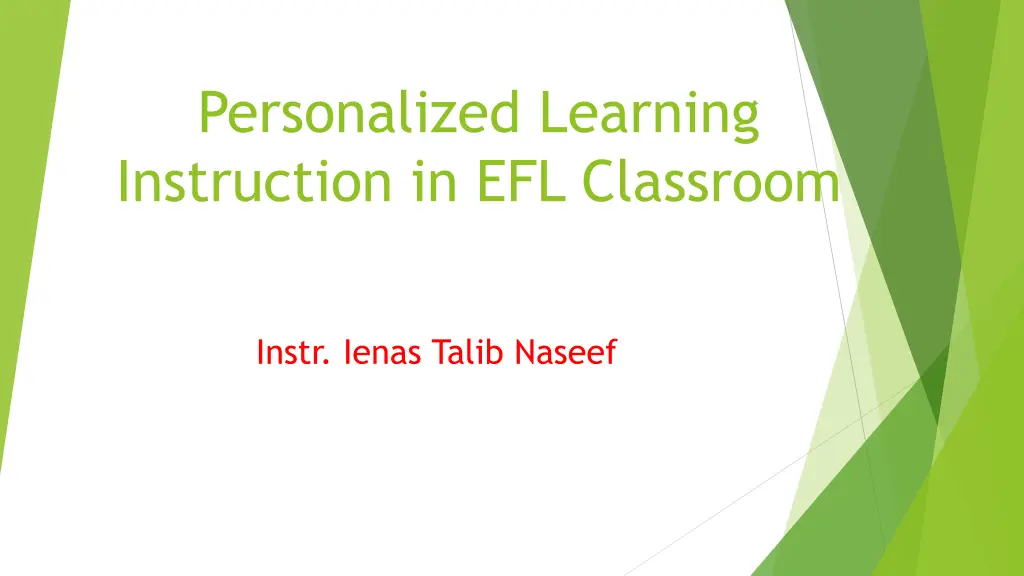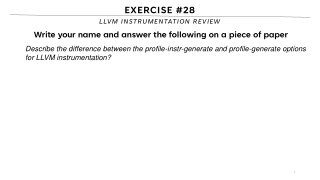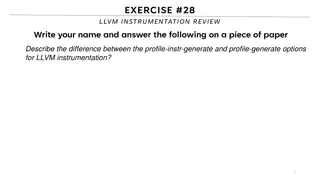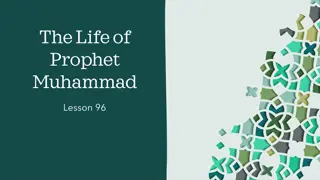
Boost Student Growth with Personalized Learning in EFL Classroom
Discover how personalized learning in the EFL classroom can enhance student academic growth by meeting individual needs. Explore the core elements of flexible content/tools, targeted instruction, student reflection/ownership, and data-driven decisions. See how digital tools complement, not replace, teacher support for student success.
Download Presentation

Please find below an Image/Link to download the presentation.
The content on the website is provided AS IS for your information and personal use only. It may not be sold, licensed, or shared on other websites without obtaining consent from the author. If you encounter any issues during the download, it is possible that the publisher has removed the file from their server.
You are allowed to download the files provided on this website for personal or commercial use, subject to the condition that they are used lawfully. All files are the property of their respective owners.
The content on the website is provided AS IS for your information and personal use only. It may not be sold, licensed, or shared on other websites without obtaining consent from the author.
E N D
Presentation Transcript
Personalized Learning Instruction in EFL Classroom Instr. Ienas Talib Naseef
Personalized learning It is increasingly recognized as a promising strategy to boost student academic growth by meeting the individual needs of students
THE CORE FOUR ELEMENTS OF PERSONALIZED LEARNING IN THE CLASSROOM 1. Flexible Content and Tools 2. Targeted Instruction 3. Student Reflection and Ownership 4. Data-Driven Decisions
Flexible Content and Tools Instructional materials allow for differentiated path, pace, and performance tasks Teachers understand how to use foundational, adaptive, and highly customizable content and tools in order to differentiate the path, pace, and/ or performance tasks of learning.
Where digital content and tools are used, they do not replace the teacher; rather, they work alongside the teacher to better support students needs by providing remediation, practice, extension, and/or a variety of ways to demonstrate knowledge authentically.
2. Targeted Instruction Instruction is aligned to specific student needs and learning goals Using data, teachers identify specific student needs and provide instruction to meet those needs. Teachers employ small groups, 1-1, strategy groups, or other targeted instruction to create a learning environment where all individual needs can be met.
Student Reflection and Ownership Ongoing student reflection promotes ownership of learning Students have frequent opportunities to reflect on what they are learning and their success in learning. Students make goals to improve their learning outcomes and have opportunities to make authentic choices for their learning. Students have authentic choice and ownership over their learning.
Data-Driven Decisions Frequent data collection informs instructional decisions and groupings Teachers use data to inform instructional decisions in their classrooms. Students are provided with opportunities to review their own data and make learning decisions based on that data.
Conclusion Shifting to personalized learning is not a simple task. Significant effort will be necessary to create a vision, develop instructional models, acquire digital tools, and train teachers and students. The Core Four is designed to provide educators with a guide for their personalized learning implementation. The elements of the Core Four should be viewed as spectrums that can be started immediately in small ways, building on what you re already doing in your schools and classrooms. To master these elements alone or in conjunction requires a significant dedication of time and resources.




